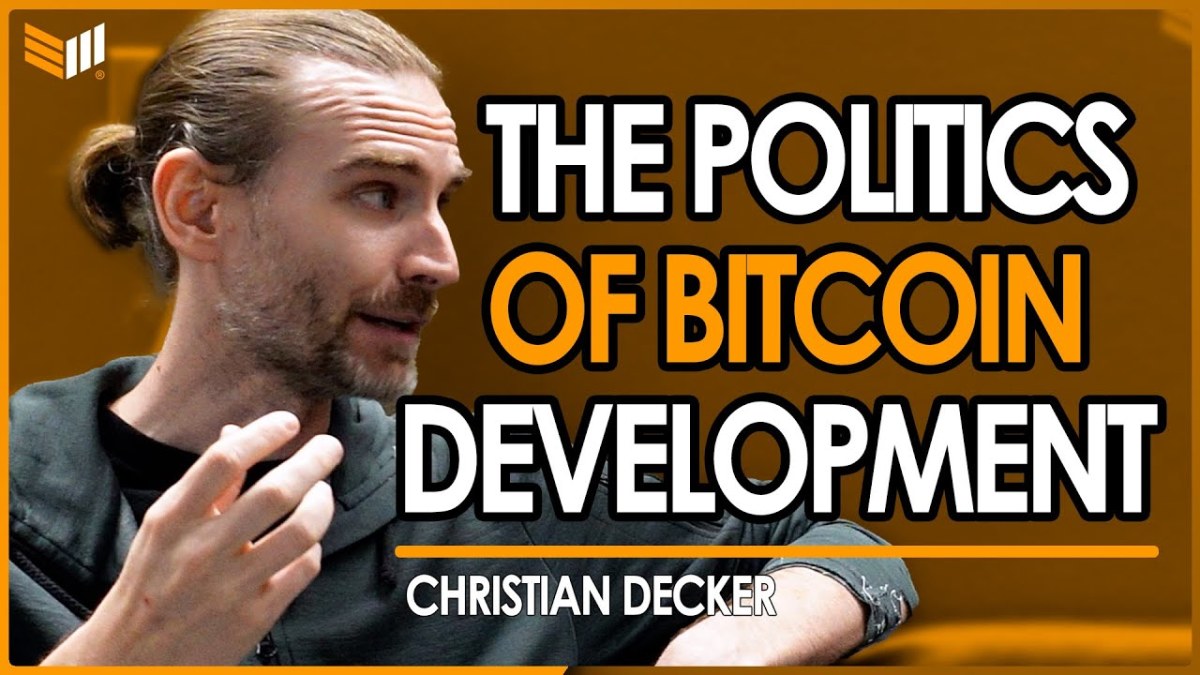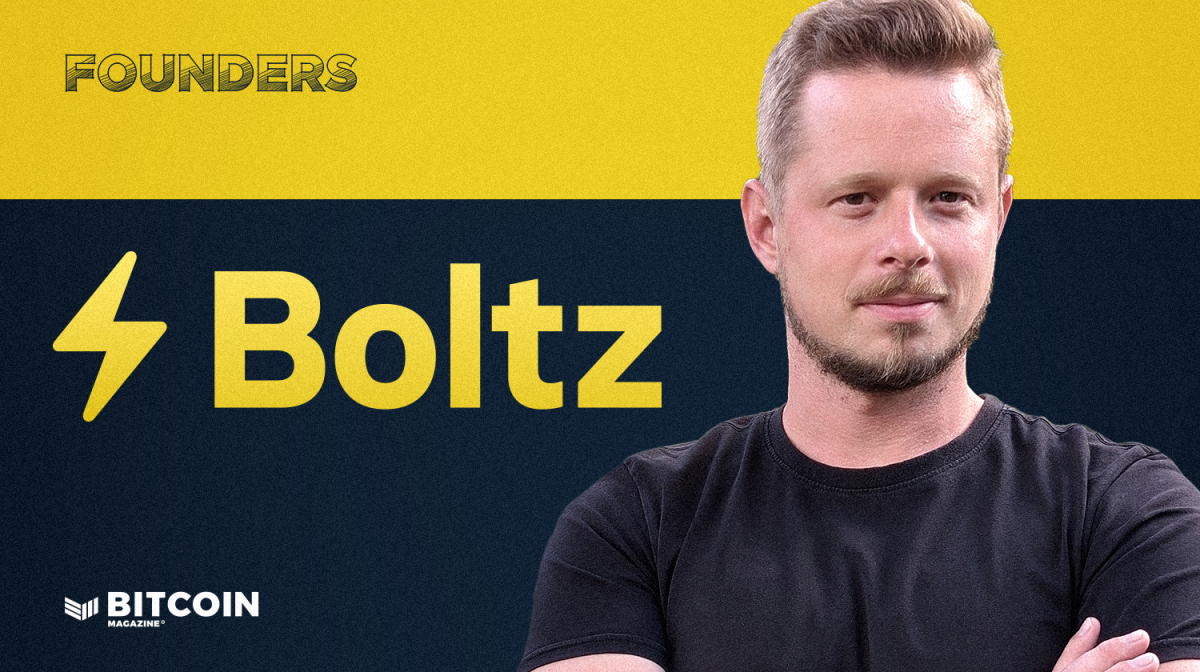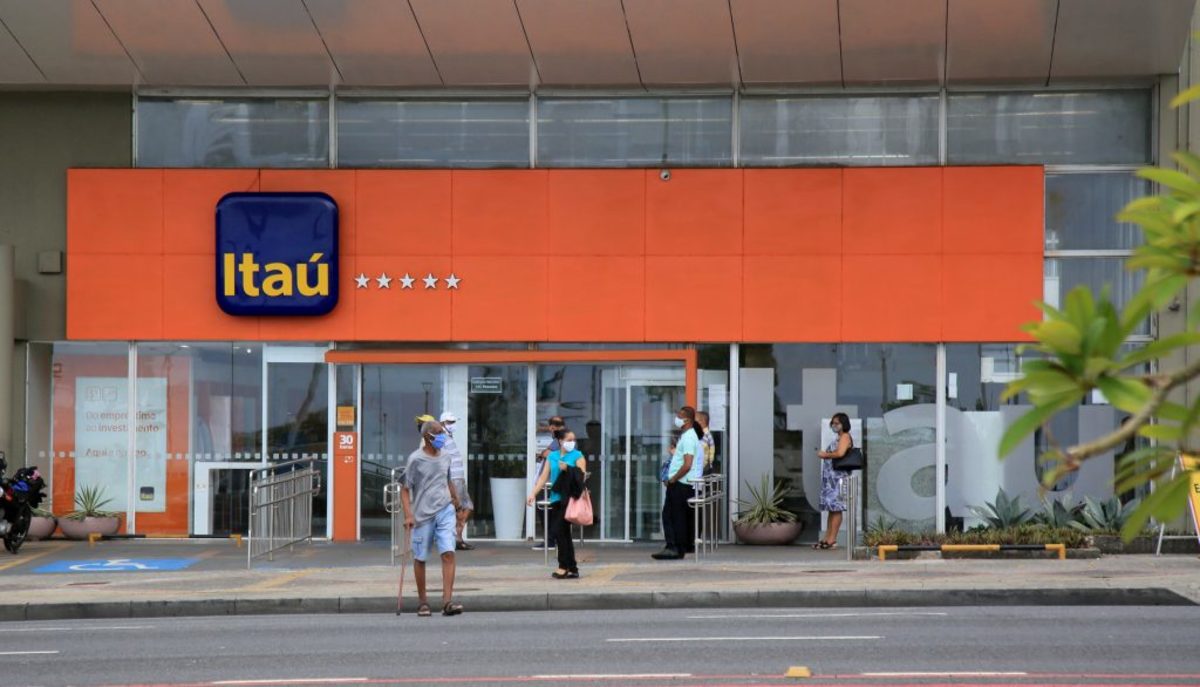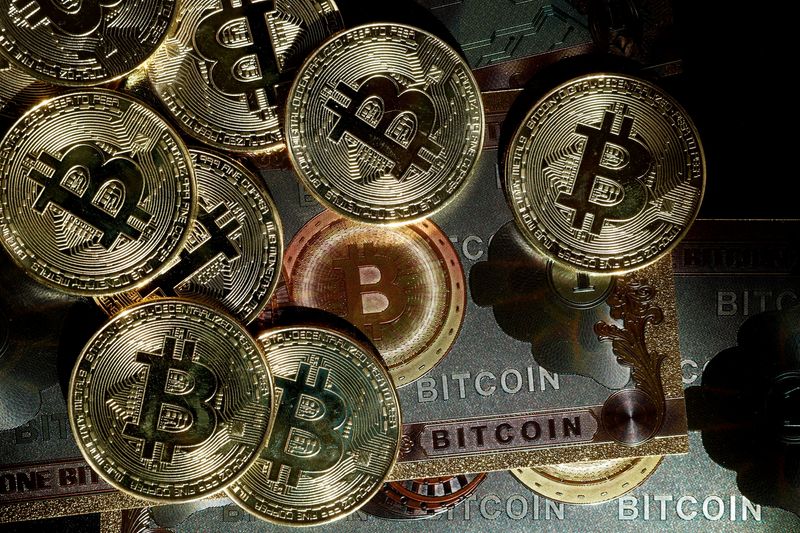Month: June 2024
LFG Learnings Report: Digital Asset Computing Is an Economically Viable Approach to Reducing Landfill Methane Emissions
Abstract
In this study, we reveal that it is not only feasible but economically viable and environmentally beneficial to use landfill gas (LFG) for digital asset compute (e.g., Bitcoin mining). To support this theory, Marathon partnered with Nodal Power to harness excess capacity from their project, which is exclusively powered by landfill methane gas. This partnership, leveraging Nodal’s patented technology, successfully utilized methane from a landfill, converted it into electricity, and used it to power the on-site data center. This process proved to be consistently reliable, with high uptime and emerged financially beneficial for Marathon and Nodal. The cost of electricity was substantially lower than the industry average, and the landfill generated revenue from a previously untapped resource that would otherwise have been wasted. Additionally, powering compute with landfill gas efficiently reduced methane emissions. In scenarios where the landfill would have resorted to flaring the methane, digital asset compute proved to be more effective in mitigating emissions.
This pilot project was Marathon’s first successful test run of “energy harvesting,” which includes initiatives dedicated to converting waste into energy, methane gas recapture, stabilizing energy grids by utilizing stranded or excess energy, and reusing heat generated by data centers for industrial and commercial purposes.
Click HERE to download a PDF of the full report
Introduction
Methane is a potent greenhouse gas with a global warming potential 80 times greater than carbon dioxide over a 20-year period. According to the Global Methane Assessment, “achieving methane emissions reductions in the next decade will keep the planet significantly cooler than attempts to cut carbon dioxide emissions alone.” In our Cashing in on Trash report, we cited that landfills are responsible for 11% of global methane emissions, with recent studies suggesting that these emissions might be 1.4 to 2.6 times higher than previously estimated.
Recognizing that landfills are major emitters of methane, we believed there was an opportunity to make landfills more sustainable with our digital asset compute technologies. Large landfills capable of producing sufficient quantities of methane have the option to economically reduce their emissions through waste-to-energy conversion technologies. These sites can convert captured methane into two forms of sustainable energy: 1) electricity, which can be sold to the grid, and 2) renewable natural gas (RNG), which can be distributed through pipelines. Unfortunately, traditional waste-to-energy conversion methods are often not feasible or economical for smaller or more remote landfills. In our report, we proposed a more viable, win-win solution that we believed was feasible today for smaller landfills: capture methane from landfills, convert it into electricity, and power digital asset data centers to economically reduce methane emissions.
To test our theory, Marathon launched a pilot project by joining Nodal’s off-grid digital asset compute facility to power a Bitcoin data center with 100% renewable, off-grid energy from a landfill.
Pilot Details
Location: Utah, USALaunch Date: September 27, 2023Pilot Status: On-goingDuration: 240+ daysCapacity: 270 kWComputing Equipment: 83 S19J ProsOperational Hash Rate (computing power): 8.3 PH/s
Figure 1: Marathon’s and Nodal’s Project
Source: Nodal PowerSource: Nodal Power
The results from this pilot supported our initial theory. Marathon and Nodal utilized methane from the landfill and converted it into electricity to power a digital asset data center. The landfill successfully reduced its methane emissions while generating a revenue stream it otherwise could not have earned. Marathon and Nodal realized an energy cost significantly below the industry average and maintained an above-average operational uptime. Additionally, this was Marathon’s first successful trial of “energy harvesting,” marking a significant milestone in our development of sustainable and inclusive energy projects. These projects include converting waste into energy, methane gas recapture, stabilizing the energy grid by utilizing stranded or excess energy, and reusing heat generated by mining systems for industrial and commercial processes.
Definitions and Calculations of Key Metrics
During our pilot project, we tracked various metrics to evaluate the effectiveness and impact of our operations. The following are the key metrics used in this report, each outlined with its definition and calculation method.
Average Operational Hash Rate
The average hash rate or computing power that was generated during a specific time period from all operational digital asset computing devices, measured in petahashes per second (PH/s).
Pool reported hash rate per day / Total days
Operational Uptime
The percentage of time that the computing devices were functional and actively operating.
Operational uptime = Minutes with pool reported hash rate / Total minutes
Methane Utilized
The volume of methane gas (CH4) that was harnessed for generation, measured in Standard Cubic Feet (SCF).
CH4 utilized (SCF) = Average petahash (PH/s) × Methane utilization rate (SCF/PH/s/Day) × Days
Carbon Dioxide Equivalent Emissions (C02e)
CO2e quantifies the global warming impact of various greenhouse gases, like methane, by comparing their effect to that of an equivalent amount of carbon dioxide. This comparison is based on each gas’s Global Warming Potential (GWP), a factor that represents the comparative warming effect of a unit of the gas relative to the same unit of CO2 over a specific time frame. We used a GWP timeline of 20 years (factor: 84) and 100 years (factor: 28).
C02e = CH4 pounds utilized * GWP factor
Note: We assumed one SCF of CH4 equals 0.045 pounds at one atmosphere and 80 degrees Fahrenheit.
Average Fuel Cost per Kilowatt-hour (kWh)
The average cost of electricity per kWh includes operational and maintenance expenses.
Average Fuel Cost per kWh =
(SCF × 0.001002 dekatherms per SCF × methane content percentage × rate per dekatherm / kwh) + (operations and maintenance cost / kWh)
Results
The results presented in this section reflect the first 240 days of the pilot project, spanning from September 27, 2023, to May 24, 2024. It is important to note that these findings do not encompass the entire duration of the project but focus specifically on this period.
Methane Utilized
Over the course of 240 days, we utilized approximately 16.1 million SCF of methane. This figure was estimated from the daily utilization rate, which was approximately 8,400 SCF of methane for each petahash operational.
Had we not harnessed this methane, the landfill would have flared it. While flaring does reduce the global warming potential of methane by converting it into carbon dioxide, it is only about 92% efficient. On average, 8% of flared methane still escapes into the atmosphere. By redirecting the methane to power a reciprocating engine to produce electricity for Nodal’s data center, we achieved a near 100% mitigation efficiency. This approach resulted in us mitigating an additional 672 SCF of methane daily per petahash, which would otherwise not have been mitigated by flaring. In the span of 240 days, we prevented the release of approximately 1.3 million SCF of methane into the atmosphere.
Figure 2: Methane Utilized by Marathon’s and Nodal’s LFG Pilot Project (240 Day Duration)
Source: Nodal Power
Carbon Dioxide Equivalent Impact
To contextualize the environmental impact of our pilot project, we calculated its methane utilization in its carbon dioxide equivalent using a GWP timeline of 20 years and 100 years.
Of the total 16.1 million SCF of methane we utilized, our findings indicate that we helped prevent the release of approximately 60.9 million pounds of C02e using a 20-year GWP timeline and 20.3 million pounds of CO2e using the 100-year GWP timeline.
According to the Environmental Protection Agency (EPA), an average gas-powered passenger car emits about 9,200 pounds of C02 annually. Thus, over the course of 240 days, our project mitigated the equivalent of 6,627 gas-powered passenger cars using the 20-year GWP timeline and 2,209 gas-powered passenger cars using the 100-year GWP timeline.
If we only consider the additional 1.2 million SCF of methane mitigated in addition to flaring, we prevented the release of approximately 4.8 million pounds of C02e using a 20-year GWP timeline and approximately 1.6 million pounds of CO2e using the 100-year GWP timeline. Thus, over the course of 240 days, our project mitigated the equivalent of the yearly emissions from 530 gas-powered passenger cars using the 20-year GWP timeline and 177 gas-powered passenger cars using the 100-year GWP timeline.
Figure 3: Carbon Dioxide Equivalent Methane Utilized by Marathon’s and Nodal’s LFG Pilot Project (240 Day Duration)
Source: Nodal Power
Operational Efficiency and Uptime
We used a reciprocating engine on-site to convert the methane into electricity. This engine produced up to 10,000 BTU per kWh, equating to a conversion efficiency of approximately 34%. Compared to the average coal and existing nuclear power plants, which operate at an efficiency of around 32% and 33%, respectively, Nodal’s generator operated at a slightly higher efficiency.
Figure 4: Efficiency of the Average Natural Gas Power Plants, Existing Nuclear Power Plants, and Coal Power Plants Versus Nodal’s On-Site Reciprocating Generator
Source: Nodal Power, EIA
Figure 5: On-Site Reciprocating Generator and Data Center
Source: Nodal Power
Moreover, to effectively harness the methane for generator use, it underwent treatment through a gas compression and conditioning skid. This crucial step refined and pressurized the methane to meet necessary standards. The extent of treatment depends on the gas quality, directly influenced by the landfill’s organic matter composition. In this particular case, the landfill gas contained approximately 50% methane, resulting in a comparatively lower level of treatment requirement.
Figure 6: Gas Compression and Conditioning Skid
Source: Nodal Power
A key aspect of the project’s success was the landfill’s ability to generate a consistent stream of methane due to its favorable waste composition and volume. Going into the project, we expected an operational uptime of 85%, which is approximately on par with the industry average. However, our pilot exceeded expectations, achieving an uptime of 92%. Downtimes were primarily due to maintenance purposes and were not due to a lack of gas availability.
Figure 7: Average Operational Uptime of Marathon’s and Nodal’s Pilot Project
Source: Nodal Power, TheMinerMag
*The average uptime of digital asset compute providers is based on the average Bitcoin hash rate realization rate. These providers include Iris Energy, Bitdeer Technologies Group, Hive Digital Technologies, Bit Digital, CleanSpark, TeraWulf, Core Scientific, Cipher Mining Technologies, Riot Platforms, Marathon Digital Holdings, Argo Blockchain, Hut 8, and Digihost Technology. The data was accessed on May 28, 2024, and may have changed since then.
Financial Benefits for Marathon, Nodal, and the Landfill
Nodal’s Power Plant generates electricity at a rate of $0.03 per kWh, which includes operational and maintenance costs. This rate is less than half the average $0.08 per kWh paid by the industrial sector.
Figure 8: Average Fuel Costs Including Electricity, Operational, and Maintenance Costs of Marathon’s and Nodal’s LFG Pilot Project
Source: Nodal Power, Hashrate Index
Our pilot project was not eligible for carbon credits or renewable energy credits (RECs), benefits that many similar sites often receive. If we had qualified for these incentives, our computing expenses would have been significantly lower.
Over the 240 days, Marathon and Nodal utilized approximately 1.4 million kWh of electricity, which the landfill was able to generate revenue from. Without Marathon’s and Nodal’s pilot project, the landfill would have flared the excess methane, yielding no additional financial benefit. Faced with limited options, the landfill could either flare the methane without any financial gain or harness it to power an on-site data center. The latter option, as evidenced by the pilot project, not only prevented waste but also turned a previously unprofitable byproduct into a source of revenue.
Conclusion
The results from our pilot project successfully validated our initial theory. Digital asset compute is not only possible but also an economically viable option to reduce methane emissions from landfills. Marathon and Nodal successfully captured methane from a landfill, converted it into electricity, and used it to power Nodal’s data center. For data center operators like Marathon and Nodal, the project was financially advantageous, as we realized a lower-than-industry average cost for computing with reliably high uptime. For the landfill, which previously did not have an incentive to put the methane gas into productive use, digital asset compute provided a catalyst to reduce emissions more effectively by creating a new income stream that otherwise could not have been generated. This project was, indeed, a win-win for all parties involved.
Furthermore, we believe the techniques and insights gained from this project open the door to new opportunities at landfill sites and other industries where we can leverage our energy harvesting technologies to tap underutilized or wasted energy sources and turn them into productive, more sustainable assets.
Click HERE to download a PDF of the full report
Disclaimer: This report is provided for general informational purposes only. The opinions expressed in the report may differ from those expressed by Marathon Digital Holdings (“MDH”), its officers, employees, directors or advisors or their affiliates. The information on this report does not constitute investment, legal, accounting or other advice or information by MDH or its officers, employees, directors or advisors or their affiliates. Information has been obtained from sources believed to be reliable, but MDH or its affiliates do not warrant its completeness or accuracy. Outlooks and past performance are not guarantees of future results. The information in the report may be changed without notice and is not guaranteed to be complete, correct or up-to-date, and may not reflect the most current developments.
Peer-To-Peer Bitcoin Trading Protocol Hits Milestone
Civkit, a project attempting to revitalize the global peer-to-peer economy, announced the release of its first alpha version following over a year of dedicated development. The protocol aims to enable peer-to-peer trading in a decentralized manner, eliminating the need for a centralized order book. The design is architected around Nostr and Lightning, with a reputation system at its core.
A team of anonymous developers, led by Nicholas Gregory (Commerceblock, MercuryLayer), has been working behind the scenes to bring this vision to life. “The project is funded by people in the global south. Much of the work has involved understanding their actual needs rather than imposing our assumptions,” says Gregory. “Ray Youseff and Noones have provided funding for some developers, including one who lives in the global south, allowing us to test in regions where this solution is most needed.”
The Civkit Node provides a UI to create P2P trade orders. You can use this to create buy/sell orders for peer-to-peer trades, pay the hold invoices, chat with the trading partner, confirm fiat received to release payment, raise disputes (in the chat app), and view other trade orders.
Using a custom Nostr event type, CivKit allows orders to be shared among Nostr relays accepting these types to create a global orderbook. The escrow system returns BOLT11 invoices, locking 5% of the trade amount in a hold invoice which is released upon trade completion. A URL is provided to access the encrypted chat, which includes basic dispute features.
The team expects the alpha version of the Civkit reputation system to be released in two weeks. Following this, the focus will shift to federating the order book and escrow with Fedimint, and subsequently incorporating eCash support.
“This is a very ambitious project with a long way to go, but it’s exciting to see our first tangible results,” Gregory adds.
Orange Man Good: Selling Out On The Campaign Trail
After 20 years of forever wars, growing social decline and exacerbating economic demise, it seems that we are still immune to learning that politicians lie. Practically, the US is still in the same place it was in 2004, fueling raging conflicts across the Middle East. The treasury is still overleveraged to both its ears, the stock and housing markets again lie on the brink of implosion, homelessness still continues to rise, jobs are still scarce, and still nobody really knows how to pay for anything.
If there is a point to be made about US politics, it’s that it doesn’t matter whether the man in alleged charge of the country is an army-dodging goon that can’t figure out how to use binoculars, a progressive in t-shirts campaigning for unity and peace while bombing the life out of Somalians with automated drone warfare, or a literal dementia patient. Voting for Trump may temporarily muffle the echo haunting that empty space between your ears as you convince yourself to at least have done something to fulfill your imaginary patriotic duties, but it can’t change the moral corruption inherent to US politics – and it sure won’t change anything for Bitcoin.
Most politicians run from responsibility like a fat kid from a diet plan, and electing an overweight billionaire won’t lessen the White House’s appetite for cake. Overall, Trump’s campaign promises are the same as yesteryear’s, of which he kept roughly 23% according to politifact. Some of his failures can be attributed to the fact that it takes more than a president to just say things to pass actual legislation, while others seem to have been outright delusional from the get-go in attempts to garner votes.
Trump built around 40 miles of his infamous US-Mexico border wall, and no, Mexico did not pay for it – likely because it’s not so easy to make a foreign country do something to its own disadvantage, even when you’re holding the office of the most powerful man in the world. Even before COVID, Trump did not increase economic growth by 4% per year – likely because you can’t just grab the US economy by the pussy to bully it into submission like that “terrific guy” Jeffrey Epstein who is “a lot of fun to be with”. While Trump sure is an ace in the polemics of grandeur, voting is not a substitute for thinking.
There was no increase in local manufacturing, no creation of an infrastructure fund, no ban on lobbying for White House and Congressional officials, no movement on deducting health care premiums from taxes, no repeal of Obama Care, and no defunding of the education department. There were no cuts to the number of tax brackets, no repealing of the alternative minimum tax, no elimination of the carried interest tax break, no voluntary release of his tax returns while holding office, and federal debt went up – not down. There was no expansion of the right to carry in all fifty states, no increase in US Army soldiers, no rebuilding of the Marine Corps, no renegotiation of the Iran deal, and no special prosecutor appointed to investigate Hillary Clinton. Lie to me harder, daddy.
Trump did not deport all undocumented immigrants, did not deport all Syrian refugees, did not reinstate waterboarding, could not keep his Muslim ban in place, and did not triple ICE enforcement. He did not adopt the Penny Plan cutting spending by 1% per year, but he did pressure others to increase NATO funding, limit legal immigration, enact a travel ban, and kept Guantanamo Bay open – The US’ infamous torture site notorious for wrongful imprisonments and the producing of false information, which has cost the US $500 million since 2001 in addition to yearly operational costs estimated at $150 million, excluding costs for black budget operations.
Now Trump promises to declassify September 11 files and files on JFK, which he seemed to have had no interest in declassifying the first time around, but is not so quick to declassify the files on Jeffrey Epstein, likely due to his own implications in the Epstein scandal which, of course, is only guilt by association.
The most notable of Trump’s achievements may yet be his enactment of Operation Warp Speed and the moving of the US Embassy from Tel Aviv to Jerusalem. Operation Warp Speed, the public-private partnership to accelerate the development of now widely known as more than questionable COVID-19 vaccines, enforced speedy clinical trials and the tracking of injection schedules for US Americans, and resulted in several controversial COVID vaccine promotion statements calling it “one of the greatest achievements of mankind”, while fairly anticipating that some of the vaccines produced would not be safe or effective – but at least he quoted Star Trek.
Trump’s relocation of official government buildings to disputed territories only exacerbated the conflict between Israel and Palestine, which is estimated to cost the US around $38 billion between 2018 and 2028 under the Memorandums of Understanding, excluding an agreed upon $500 million per year for the development of missile systems, and a few billion here and there in aid packages amid ongoing conflicts, like the one passed in 2023 totaling payments of $14 billion. At the same time, the US continues to sell bonds to Israel despite its shrinking economy, the terms of which we can only assume to be so embarrassing that the SEC has not published a prospectus on Israeli bonds since 2018.
When it comes to the Middle East, it really doesn’t seem to matter who US voters would like to see elected as it’s the same crap in a different color shitbag on both sides of the aisle. However, Trump did bomb the shit out of Iraq and Syria in attempts to make good on his promises of eliminating ISIS by continuing Obama’s Operation Inherent Resolve and killing thousands of civilians in the process, which cost the US $13.6 million per day.
The only thing looser than a US president’s pockets when it comes to spending war money may be the mouth of presidential candidates in election years. While many who appreciate Bitcoin as a tool for financial freedom have found the technology precisely because of its resistance to political meddling and their discontent with current fiscal policies, don’t mind them campaigning for potential presidents elect so long as the words chanted may lift themselves out of their agonizing irrelevancy, raising the question whether we’re practically capable of using our brains for anything other than decoration.
All it seems to take to support yet another senile rhetorician at the helm of our so-called democracy is a promise to free Ross, which Trump could have done if he’d actually believed in freeing Ross while serving the term of his past presidency, which instead he chose to use to plot the assassination of Julian Assange for those suffering from short-term memory. Meanwhile Bitcoin proponents cheer on Trump’s vows to protect the right to own Bitcoin under federal regulations, which we don’t need in the first place as the right to own property and the right to free speech governing the distribution of free software are already enshrined in the US constitution, but who needs constitutional law.
Trump’s pledges to keep Senator Warren away from us have found widespread recognition which we can very much do ourselves as, for one, the majority of Senator Warren’s anti-Bitcoin proposals remain borderline unconstitutional and could easily be fought in court, and two, nobody in US politics takes her seriously anymore anyway, thank you very much. Trump’s last straw to appeal to Bitcoin voters then is his alleged stance against CBDCs, to which the house already passed the CBDC Anti-Surveillance Act, but lucky for him it seems that we don’t actually pay attention to politics unless they’re preached by convicted felons living in a golf resort.
Claiming to want “all the remaining Bitcoin mining to be MADE IN THE USA” further demonstrates his complete lack of understanding of the Bitcoin network as well as his utter disregard for it’s security, as freedom money can only exist through decentralized mining infrastructure. If we want to avoid the Bitcoin network itself being used as a CBDC abstraction through transaction white-listing implementing controlled purchases and location based restrictions, such as the wonderful OFAC sanctions list, it must remain decentralized. For those incapable of reading between the lines: by promising to make all Bitcoin mining MADE IN USA, Trump actually advocates to make the Bitcoin network less secure and less usable.
It’s undeniable that Bitcoin will get more exposure with the endorsement of a president, but let’s not forget that Trump’s favorite offspring – Donald John Trump Jr., who is currently eyeing top positions in the Trump administration – already gave us a taste of what a Trump “pro-Bitcoin administration” may actually look like. Just last month, Jr. interviewed the infamous Bitboy, where the duo called people spending their bitcoin “stupid” and dabbled in tokenizing identities on the blockchain, which should make us think in conjunction with Trump’s apparent lack of enforcement against digital IDs.
While it is true that Bitcoin can take an increasingly influential stance in elections, we rather seem to be interested in using our potential to alternate between retarded takes in blue or red that all end up coming out as purple anyway as opposed to using our newly gained prospected mandate to withhold our endorsement and boycott the babbling polemics of fossilized opportunists only to continue to be governed out of a funeral home in the making.
Logical thinking does not seem to stop ‘Bitcoin advocates’ from bragging about raising Trump bucks, declaring him the top choice, and distributing lanyards across his rallies as his PACs plot to appeal to an army of perpetual basement dwellers grasping at their first chance at national relevancy, which must be a breath of real fresh air after spending the past thirty years having lunch alone. When your morals can be bought, you are not a patriot – you are a sell out.
This is a guest post by L0la L33tz. Opinions expressed are entirely their own and do not necessarily reflect those of BTC Inc or Bitcoin Magazine.
The Politics of Bitcoin Development
In a recent conversation with Christian Decker from Blockstream, Bitcoin Magazine’s Shinobi delved into the intricate politics of Bitcoin development. Decker, a lead Lightning developer, provided a candid look at the current competitive atmosphere where developers often find themselves entangled in political maneuvering rather than engineering matters.
Decker did not mince words when describing the challenges developers face. “We have been trying way too long to be clever in as much that we try to sidestep the discussion of whether we want covenants, what kind of covenants we want, or introspection, as we like to call it,” he said. The community’s cleverness has led to fragmented efforts, with narrowly focused proposals struggling to gain traction amidst limited review cycles and intense competition.
Towards a new approach
A major problem, Decker explained, is the combative environment where developers often have to “badmouth other proposals in order for your proposal to grab the attention that is needed to get your proposal through.” This creates unnecessary tension and frustration. Rusty Russell’s recent proposal, however, offers a refreshing change. It aims to restore Bitcoin’s original scripting functionality, providing a more unified and collaborative approach.
Decker emphasized the importance of involving the broader Bitcoin community in these discussions. “If it’s just seriously discussed, I think that can be an incredibly healthy thing for the larger and wider ecosystem’s involvement,” he said. Moving towards a cooperative direction where all stakeholders openly discuss the potential benefits and drawbacks of proposed changes can foster a healthier ecosystem. This makes it harder for people to dismiss ideas based on superficial associations and encourages a more honest and transparent dialogue.
The proposal to bring back Bitcoin’s original script functionality is about “giving everybody the tools to build whatever they want” without being restrictive. Decker believes this approach will lead to more meaningful and efficient optimizations over time. “It might be inefficient the way that you can do arbitrary things, but you can at least show your work and you can show it works,” he explained. Once these solutions are demonstrated, the community will naturally come together to optimize and improve performance.
Both Shinobi and Decker agreed on the need to rely on subject matter experts in these technical discussions. However, they also emphasized the importance of these experts presenting a balanced view of their proposals’ pros and cons. Decker pointed out that the current environment often incentivizes experts to present a one-sided picture, which can mislead the community. “In Bitcoin, until now, you always had to be very loud, you had to be very salesy, and you always had to present this, this is the upside of mine, but there’s the downsides of everybody else,” he said. This competitive atmosphere has hindered honest and transparent discussions.
Engineering first
Rusty’s proposal represents a significant shift in the way Bitcoin’s development community approaches script enhancements. By re-enabling the script’s original functionality, the community can move away from politicking and towards a more collaborative and innovative future. As Decker puts it, “Let’s approach this as engineers, which is what most of us are, and not as propagandists or salespeople trying to sort of just get your stuff done.”
This conversation sheds light on the ongoing efforts to improve Bitcoin’s scripting capabilities and underscores the importance of cooperation and honest dialogue in achieving these goals. As the Bitcoin community continues to evolve, proposals like Rusty’s offer a promising path forward for enabling more flexible and programmable money on the Bitcoin network.
Between Bitcoin Layers: Boltz Builds Trustless Transfers
Company Name: Boltz
Founders: Kilian and Michael
Date Founded: Project began in 2019 | Incorporated in 2023
Location of Headquarters: Remote | Incorporated in El Salvador
Amount of Bitcoin Held in Treasury: 100% of treasury is BTC
Number of Employees: 5
Website: https://boltz.exchange/
Public or Private? Private
Swapping sats between Bitcoin layers can be difficult, but Boltz makes it easier.
Boltz is a non-custodial exchange that lets users send their bitcoin between the Bitcoin base chain, the Lightning Network and the Liquid Network.
While Boltz is now used by both everyday bitcoin users and institutions alike, the platform, which is almost as old as the Lightning Network itself, was born out of necessity and was foundational in helping the Lightning Network function in its early days.
The History of Boltz
“Boltz as an idea started in 2018,” Kilian told Bitcoin Magazine.
“I was working on a Lightning-based decentralized exchange and realized pretty quickly that it was very tough to keep Lightning channels balanced,” he added.
“Boltz was really born as a band-aid to fix this, a service provider that would take care of your Lightning channel balances and keep them balanced for you.”
In creating Boltz, one of the primary non-negotiables Kilian and his team established was that it had to be non-custodial so to best align with the Bitcoin ethos of decentralization.
The Boltz mainnet launched in April 2019 and facilitated Bitcoin base chain to Lightning swaps only until early 2023, when Kilian and Boltz’s other co-founder, Michael, realized that Boltz needed more attention.
“We saw it organically growing and we felt that it deserved more,” said Kilian.
“We decided in early 2023 to go in full time and that the next major feature would be Liquid Swaps, which we then launched in May 2023,” he added.
It was around this time that Kilian and Michael turned Boltz into a proper business, as opposed to a passion project, which it had been up until that point. In doing so, they went after a new user base and experienced some growing pains in the process.
Liquid Swaps
“In 2023, when we started Liquid Swaps, we targeted more professional users, specifically for the channel rebalance use case in a fee sensitive [environment],” explained Kilian. “We launched it during the fee spike in May 2023.”
The fee spike to which Kilian referred was the result of the introduction of Ordinals onto the Bitcoin base chain. Bitcoin transaction fees had reached all-time highs by late-April 2023.
Bitcoin transaction fees hit all-time highs in April 2024 | Source: YCharts
As fees rose to 500-600 sats/vByte, resulting in transaction fees hitting over $100 in some cases, things began to break and even Boltz felt the heat.
“We had to shut down Boltz for three or four days,” recalled Kilian.
“Boltz was not available because we had all our working capital locked up in the mempool and we were not able to pump it out because fees kept on rising. A lot of similar services had this problem,” he added.
Kilian then pointed out that Liquid was a solution for many companies facing this predicament.
“If you imagine the typical use case of getting inbound liquidity on Lightning, you can do so multiple times with Liquid,” explained Kilian.
“You send out via Lightning, thus getting inbound liquidity, and get Liquid LBTC back. This really made a lot of sense to users when we launched it. The launch was successful, [and we] breathed a little bit of life into the Liquid ecosystem,” he added.
Kilian also shared that Boltz’s swap service underpins the Aqua Wallet, a wallet that enables Liquid to Lightning swaps that became popular in mid-2023.
Boltz — Behind the Scenes
Aqua isn’t the only Bitcoin-related product that employs Boltz on the backend.
Breez Wallet, a non-custodial Lightning wallet, was actually the first bitcoin wallet that utilized Boltz’s swap service.
“Sometimes Breez users want to send to an on-chain regular Bitcoin address because the merchant only accepts on-chain,” said Kilian. “So, Breez integrated our open, publicly-available API in order to offer these swaps directly within the app.”
For a Breez Wallet user to spend some of their sats on Lightning for an on-chain purchase, they simply have to scan a Bitcoin QR code and the bitcoin swap from Lightning to the Bitcoin base chain happens in the background via Boltz.
Kilian said that Boltz plans to work with more companies in providing its service behind the scenes.
“It’s crucial for great UX that users do not have to open our website but can stay in whatever product/wallet they [are using] and move their bitcoin between layers right where they are,” Kilian said. “Our non-custodial API is something we pioneered and we are very proud of.”
How Boltz Works — Atomic Swaps
According to Kilian, creating a non-custodial service — especially one that integrates well with other non-custodial services — was not an easy task.
As mentioned, keeping the service non-custodial was a must for Kilian and the Boltz team, partially because they didn’t want to be regulated as an entity that custodies user funds and partially because they didn’t want users to have to trust intermediaries to execute the transactions.
“You do not want to trust a random website, a random project that you find on the internet,” explained Kilian.
“We also want to be available to users that say, ‘Okay, I don’t know them necessarily, but I hear these guys saying it’s non-custodial. Probably some technical person checked that it’s actually non-custodial, so I’m going to give it a shot,’” he added.
The key technology that enables Boltz to be non-custodial is the Atomic Swap. And Boltz utilizes a subcategory of Atomic Swap called the Submarine Swap.
Submarine Swaps employ hash time-locked contracts (HTLC), which in layperson’s terms, enable two transactions (both sides of the swap) to happen simultaneously by linking them together cryptographically inside of a smart contract. Using this technology, there is no way for one exchange to occur without the other occurring at the same moment.
This is the most trustless solution that exists for moving sats between Bitcoin layers.
And in January of this year, Boltz took this technology to the next level when it enabled Taproot Swaps, which has helped make issuing refunds on failed Lightning transactions more efficient.
“Until January, when a swap to a Lightning invoice or to a Lightning destination failed, you had to wait until you could get your refund back,” said Kilian.
“That’s a drawback and just bad UX in the end. With Taproot, there’s a new way you can spend coins. It’s called ‘key path.’ And with this key path spent, basically what we could do is we could issue refunds immediately,” he added.
Kilian added that Taproot Swaps also enhance privacy, as they don’t reveal anything about the swap on-chain.
“If a chain observer is looking at the chain, one cannot tell that this is part of an Atomic Swap or even a Boltz swap,” explained Kilian. “There’s no way to do that.”
A “Privacy-Respecting” Solution
After Kilian said the “P” word — privacy — I inquired as to whether or not he was worried that Boltz might end up in the crosshairs of the authorities, especially in the wake of the US Department of Justice (DoJ) pressing charges against the Samourai Wallet developers.
“I’d be lying if I’d be saying we’re not worried at all because everyone is worried and everyone was very worried, especially in the first couple of days after the Samourai incident happened,” responded Kilian.
However, he was quick to point out that Boltz itself isn’t a privacy solution but a “privacy-respecting” solution.
“We are in no way to be compared with a coinjoin or with a solution that you are using in order to gain privacy,” said Kilian.
“When you do a swap on Boltz, there’s minimum one party that has the information of incoming and outgoing payments — and that is us. You shouldn’t trust us to not reveal this information one day,” he added.
“That being said, we are respecting privacy in the sense that we are not requiring more information than is strictly necessary — the destination address or the destination invoice — in order to do this work. We do not need your email address. We also do not need your IP address. And you can access our service via Tor.”
The Future of Boltz
Moving forward, there’s one main role Kilian would like for Boltz to play.
“Our vision really is to be the bridge between the Bitcoin layers,” he said.
“We’re seeing Bitcoin layer 2 sidechains, different sorts of layers are gaining traction, and this box won’t just close. This is unstoppable now, and we want to be the place that connects these layers,” he added.
At the same time, Kilian stressed that Lightning will continue to be Boltz’s primary focus as he considers it the “connecting tissue” between Bitcoin layers. On that note, he mentioned that Boltz recently launched a new client that automates the task of rebalancing Lightning nodes.
It’s clear that while Kilian and the team at Boltz are keeping their eyes open for new opportunities, they will continue iterating on what they do best.
Whatever the future holds for Boltz, Kilian said repeatedly that it will continue to focus on being “the easiest place with the best UX to non-custodially move [sats] in between Bitcoin layers.”
Lightning Is the Common Language of the Bitcoin Economy
One of the best parts about running Breez is the diverse range of people I get to meet and work with. We have partners from Jamaica, the USA, Switzerland, Germany, Canada, Estonia, and who knows where else. We have users in Finland, Wales, Namibia, India, and almost everywhere else. The people behind Breez are split across three continents and come from a broad range of national and ethnic backgrounds.
Agreeing on a communication platform (Telegram? Slack? Zoom? Discord?) sometimes takes a bit of coordination. What never needs coordination, though, is the language we use to communicate. It’s always automatically English. For many of us, English is our second (or third, or fourth) language, and parts of it are baffling, but it doesn’t matter. Every initial contact is in English, all channels are automatically in English, and all public communication (like this blog) is in English. There’s not even a contender for second place.
And there’s basically no way to change this convention. Nobody could simply decree that we’re all going to start speaking Mandarin or Esperanto or Inuktitut. Whether because of convenience, actual utility, historical imposition, or sheer numbers, English is locked in. But it works, so why mess with it?
This example demonstrates a few points. First, the interface between individual nodes in a network – whether people, nations, or communities – has the form of a language. Second, there needs to be a common language. In fact, the limits of the language are the limits of the network. In other words, the distribution of the language defines the network. Finally, common languages are very sticky. Once everyone has adapted to a common language, it’s basically locked in.
Now for a fact about the present that will irrevocably shape the future: Lightning is emerging as the common language of the bitcoin economy.
Lightning is bitcoin’s Tower of Babel, but nobody wants to tear it down. (Image: Wikimedia)
A Common Language among Subnetworks
We’ve talked before about various last-mile technologies. They’re like the local secondary roads that connect users to the higher-throughput Lightning Network and, ultimately, the Bitcoin mainnet. They all basically work by bundling users and their transactions into subnetworks.
For example, Ark and Liquid convert incoming bitcoin into their own mechanisms (VTXOs and L-BTC, respectively) that users can then send to each other according to their respective protocols without needing further on-chain transactions. Alternatively, Fedimint members effectively pool their bitcoin and trade IOUs among themselves, with transactions and the financial state of affairs overseen by a federation of trusted guardians. With Cashu, people exchange e-cash tokens and trust the issuing body.
Each kind of subnetwork can use its own language. How the nodes communicate among themselves in these subnetworks is their business. What’s interesting is that these subnetworks communicate with each other over Lightning, even if we’re just talking about, say, two different Cashu mints or when a Fedi interacts with an Ark. Lightning is the common language of all the emergent and thriving subnetworks based on bitcoin.
Returning to the analogy of English, it doesn’t matter to me what language you speak at home or at the supermarket. You can speak whatever obscure dialect you want with others who understand it. But if you want to talk to me or virtually anyone else on Telegram or Slack, English is really the only option. Nobody could change that even if they wanted to, and nobody seems to want to. Just like Lightning.
Lightning is the common language of the emerging subnetworks. It’s the language of bitcoin.
Why Lightning Is the Optimal Language for Bitcoin
A common language is not necessarily an optimal language. It just has to work and be broadly accepted. Just like the Bitcoin mainchain has certain advantages (e.g. immutability, openness, borderlessness, etc.) that recommends it for certain uses, Lightning is the best choice for a common language between subnetworks for at least three reasons.
Layered networks interacting via a common language. (Image: Adobe Firefly)
Lightning Is Bitcoin, and Bitcoin Is the Trustless Bearer Asset
The first and probably most important reason why Lightning is the best common language is that it uses bitcoin. Simply, the subnetworks might not trust each other, and they have no reason to. But since Bitcoin and, by extension, Lightning eschew trust, the subnetworks can interact without trust. Bitcoin is the only viable bearer asset, and Lightning is the language of Bitcoin, so Lightning is the best common language for the subnetworks to interact with each other.
Further, Lightning, like Bitcoin, also eschews leverage. The whole business model of fractional-reserve banks is based on a hole in their balance sheets. By contrast, every sat on Lightning is accounted for at every moment. A balance sheet displaying all the positions on the network would be perpetually balanced. No gap, no overlap. Lightning resists imbalances due to hubris, incompetence, and villainy, which is a necessary feature in a trustless environment.
Lightning Is Inherently Transactional and Interoperable
Second, Lightning is a transactional protocol designed to facilitate flow. For normal payments, there’s no mempool and no delay until the next block is mined. Payments take seconds, if that. And transactions – money in motion – are what make Lightning valuable. Literally. Static sats on the network don’t earn any return. In order for liquidity on Lightning to grow, it has to flow. A common language won’t be used much if it rewards silence. It must promote communication, which is exactly what Lightning does.
Further, the Lightning technology detailed in the catalog of bolt specs is inherently interoperable. It was designed to enable multiple implementations of Lightning nodes with different designs, trade-offs, and programming languages. All these nodes can, however, interact over a common network because they all support the same bolts. Being interoperable by design makes it easy for other technologies to add Lightning as another interface.
Lightning Has Critical Mass
Finally, a common language needs a sizeable community of speakers. Try saying “skibidi rizz” in a nursing home or, even better, a nursing home in Cambodia. Perhaps the biggest advantage of English is simply its popularity: more people speak English than any other language on the planet. And while only a quarter of the inhabitants of many countries speak English, you can still find an English speaker at the next table at virtually every bar and restaurant on the planet. Try that with Catalan.
Lightning has already achieved a critical mass. It’s already obvious how a Cashu subnetwork and Fedimint subnetworks will communicate with each other: Lightning. That’s how they were designed, so switching the common language between networks would require rebuilding most of their parts. Like English, whatever language subnetworks use internally, Lightning is the language they use to speak to each other, and it’s already locked in.
The Permanence of Lightning
Actual lightning – the kind from storm clouds – is a notoriously brief phenomenon. Flashing momentarily and vanishing is its whole thing. But the Lightning Network – the interface between any number of nodes, subnetworks, and the Bitcoin mainchain – is not going anywhere. Common languages tend to hold that status for centuries.
Bitcoin is the world’s best currency. Lightning is the common language of the bitcoin world, and it’s here to stay. For those of us already established in Lightning, this is very good news. That Lightning is locked in means our first-mover advantage is going to be very valuable indeed.
But it’s also good news for those just entering Lightning now or considering it. It eliminates uncertainty about which technology to support and invest in. Lightning is going nowhere but up, so it’s never the wrong time to get started. Better yesterday than today, better today than tomorrow, but tomorrow is good too.
The best time to get into Lightning is now. Always has been.
This is a guest post by Roy Sheinfeld. Opinions expressed are entirely their own and do not necessarily reflect those of BTC Inc or Bitcoin Magazine.
Brazil’s Largest Bank Itaú Opens Bitcoin and Crypto Trading to All Users
Itaú Unibanco, Brazil and Latin America’s biggest bank has opened Bitcoin and crypto trading to over 60 million customers, as per reports.
BREAKING: 🇧🇷 60,000,000 customers at Brazil’s largest bank can now start buying #Bitcoin and crypto.
Gradually then suddenly 🙌 pic.twitter.com/KXSjPLFzCP
— Bitcoin Magazine (@BitcoinMagazine) June 12, 2024
The bank’s investment app, Ion, now allows users to buy and sell Bitcoin and Ethereum after initially offering crypto trading to only select clients in December 2023.
In an interview, Itaú digital assets head Guto Antunes said the move followed weekly surveys, with initial users showing strong demand for Bitcoin and crypto services.
While not disclosing user numbers, Antunes said the Ion app has surpassed 3.5 million downloads, which is significant interest for Bitcoin and crypto in Brazil.
The bank opted to build its custody solution for clients’ wallets rather than using third parties. Each user gets a separate wallet to ensure asset segregation.
As Brazil’s largest bank with extensive reach, opening Bitcoin access will boost mainstream adoption. With Bitcoin’s popularity in Brazil, the bank aims to be their preferred gateway into this new asset class.
The embrace of Bitcoin and crypto by a conservatively regulated institution like Itaú also further validates Bitcoin as an investable innovation that is here to stay. More banks in the region may follow suit.
For bitcoiners in Brazil, buying and selling through their existing bank provides accessibility and removes adoption hurdles. Itaú opening the floodgates marks a milestone in Bitcoin’s financial mainstreaming in a major Latin American economy.
Dollar slips lower ahead of Fed meeting, CPI data
Post Content
Asia FX steadies, dollar flat as CPI, Fed meeting approach
Post Content
Trump says he wants all remaining Bitcoin to be made in the US
Post Content









